Game Sense Development: Strategies, Methods and Real-World Impact
Updated On: November 12, 2025 by Aaron Connolly
Defining Game Sense Development
Game sense development is all about shaping players who can think on their feet, read the flow, and tweak their tactics as the game unfolds.
We push for understanding through real play, not just endless drills, so players get tactical awareness along with their technical chops.
Key Principles of Game Sense
Player-centred learning drives everything here.
We toss players into real game moments and challenge them to solve problems and make choices—often when the pressure’s on.
Modified games are the norm.
By tweaking the game to fit their skills, we give players a chance to explore important tactical ideas without drowning in complexity.
Questioning matters a lot.
Coaches step back from lecturing and push players to think, tossing out questions like, “What happened there?” or “Could you try something else next time?”
This nudges players to actually reflect and learn from their own decisions.
We keep the focus on the whole game, not just isolated skills.
Players see how things connect—like how one player’s position opens up a passing lane, or how timing can mess with the defense.
Problem-solving is front and center.
Players face real challenges and hash out solutions, with coaches guiding from the side.
This approach really grows their ability to read situations and adjust quickly when the stakes are real.
Benefits for Players and Coaches
Players pick up stronger decision-making skills by constantly making choices in game-like settings.
They get better at processing info fast and picking the best move.
Technical skills come along for the ride.
Because they’re using skills in context, like passing under pressure, it just feels more relevant than mindlessly kicking at cones.
Sessions actually feel fun and competitive.
Game-based training keeps boredom at bay and makes players want to show up.
Tactical understanding deepens as strategies get tested and tweaked on the fly.
Players start to get not just what to do, but when and why.
Coaches notice players getting more involved.
They ask smarter questions and seem genuinely invested in the session.
Training that looks and feels like the real thing means players transfer skills to competition a lot more smoothly.
They show up to matches with more confidence and a toolkit that actually works.
Common Misconceptions
A lot of folks assume game sense means ditching technical skill work.
But honestly, we just build those skills inside the game, so they stick better.
Some coaches worry that less structure equals less learning.
But game sense training is still planned out carefully, with coaches steering the process through smart questioning.
If you think “it’s just playing games”, you’re missing the point.
Every scenario has a purpose, and coaches are always nudging players toward specific outcomes.
There’s this myth that game sense only fits advanced players.
We actually tweak the games—smaller spaces, simpler rules—so even total beginners can get in on it.
And sure, traditional drills might give you quick technical results.
But game sense builds players who can actually use their skills when it counts.
Core Features of the Game Sense Approach
Game Sense puts the spotlight on thinking players who make smart choices in real matches.
We keep players at the center, using questions and real-game scenarios to drive learning.
Player-Centred Learning
Player-centred learning hands the wheel to the players.
We build sessions around what they need to figure out, not just what the coach wants to show.
Traditional coaching leans on set drills and routines.
Game Sense flips that—players get to experiment and discover answers to tactical problems during mini-games.
Some key ideas:
- Small-sided games that highlight specific situations
- Players solving tactical puzzles together
- Coaches guiding, not dictating
- Real game moments, not just isolated reps
We use modified games to mimic competitive moments.
A 3v2 attacking drill, for example, forces decision-making under pressure.
Players decide when to pass, shoot, or just hang onto the ball.
This works because the problems feel real—they’re the same ones players face during matches.
So, technical skills and tactical smarts develop side by side.
You end up with players who actually adapt in real time.
Questioning and Guided Discovery
Questioning helps players find answers for themselves.
We use open-ended questions to steer learning, but we don’t just hand over the solution.
Some good questions:
- “When’s the best moment to pass?”
- “What changes if you step into that space?”
- “How can you make more room?”
- “Why did that idea work better?”
Coaches set up a scenario, ask a few pointed questions, and let players try things out.
Players talk through what worked and what didn’t.
That kind of back-and-forth leads to deeper understanding than just following orders.
We steer clear of yes/no questions.
Instead, we want players thinking hard about their decisions.
That builds their confidence under pressure.
Discovery takes longer than just drilling, sure.
But when players figure it out themselves, they remember it—and use it when it counts.
Decision Making in Play
Decision making in play is all about helping players pick the right move at the right time.
We set up game scenarios that force quick thinking.
Players have to choose—do they engage or back off? When do they use a special move?
These choices decide who wins.
How we build decision-making:
- Timed scenarios with only a few options
- Learning from mistakes and their consequences
- Practicing pattern recognition
- Working on situational awareness
Game Sense gives players lots of chances to practice making decisions.
They start to read the game and spot what opponents might do.
Instincts develop for spotting openings.
We sometimes tweak the rules to force certain decisions.
Maybe we limit movement, so positioning becomes a puzzle.
Or we shift objectives to highlight different strategies.
The aim? Players who think ahead, spot what opponents might try, and counter it.
That kind of tactical awareness is what separates the good from the great.
Origins and Influences of Game Sense
Game Sense actually grew out of Teaching Games for Understanding (TGfU) in the 1980s.
Rod Thorpe and David Bunker kicked things off in the UK, and the idea caught on worldwide through coaching programmes.
It’s now a go-to athlete-centred method for building tactical smarts in team sports.
From TGfU to Modern Game Sense
Teaching Games for Understanding started back in 1982 when Thorpe and Bunker published their big ideas.
They wanted to break away from old-school coaching that just hammered skills.
TGfU put players in the thick of the game right away.
Players first figured out why they needed a skill, then learned how to do it.
TGfU has changed a lot over the years.
Some newer versions feel more formal and structured than what Thorpe and Bunker had in mind.
Game Sense actually sticks closer to those original TGfU roots.
It keeps the focus on learning by playing, not just drilling.
John Dewey’s “learning by doing” philosophy played a big role in this shift.
His take on education—get your hands dirty, learn through experience—fit perfectly with game-based approaches.
Rod Thorpe and Key Contributors
Rod Thorpe helped lay the groundwork for all these game-based methods.
He and David Bunker pushed back against the way team sports were taught in the UK.
Even before 1982, coaches like Wade were using small-sided games in football to teach tactics and skills together.
Rod Almond later joined Thorpe and Bunker, and together they refined TGfU.
These three became the backbone of game-based coaching.
Their work spread through coaching education all over the world.
National sporting bodies picked it up, and it found its way into teacher training as well.
Teachers liked it because it made classes more engaging than the old drill-and-repeat style.
Evolution Through International Practice
Game Sense didn’t stay in the UK.
International coaching exchanges and research helped it evolve.
North American approaches had a big influence on how the method developed.
Where it really caught on:
- Touch football groups
- Soccer coaching circles
- PE classes
- State and national sports bodies
It’s now one of the best-known athlete-centred methods out there—just behind TGfU in terms of global recognition.
Later on, constraints-led motor development theory helped explain why Game Sense works.
Researchers like Breed and Spittle showed that learning through games is actually pretty effective.
Countries tweaked Game Sense to fit their own sports cultures.
That flexibility helped it spread, though it also led to a bunch of different takes on the core idea.
In the last decade or so, interest in game-based coaching has picked up again.
Game Sense still shapes how we teach and coach team sports today.
Comparing Game Sense, TGfU, and Tactical Games Models

These three models chase similar goals, but they don’t all take the same path.
Game Sense aims for elite performance.
TGfU focuses on beginners.
Tactical Games tries to bridge both worlds with structured problem-solving.
Philosophical Differences
Game Sense came out of elite coaching in Australia.
It’s about building players who can read the game and make quick calls under pressure.
Coaches assume players already have basic skills.
This method sharpens decision-making in tricky situations.
Teaching Games for Understanding (TGfU) takes a more educational route.
It started in schools, where students needed to understand basic game ideas first.
TGfU puts tactical awareness ahead of skill drills.
Players learn why they do something before they learn how.
Tactical Games lands somewhere in the middle.
It gives players structured problems to solve but keeps an eye on skill-building too.
This approach fits best with youth sports where players need both understanding and technical growth.
Practical Similarities
All three group games by their tactical style:
- Invasion games: Football, basketball, rugby
- Net/wall games: Tennis, volleyball, badminton
- Striking/fielding: Cricket, baseball, softball
- Target games: Golf, archery, bowls
Coaches in each model use questions to grow game intelligence.
Instead of just telling players what to do, they ask, “What happened?” or “What would you try next?”
Modified games show up everywhere.
We shrink teams, change the field, or tweak the rules to spotlight specific tactical problems.
Small-sided play is always central.
With fewer players, everyone gets more touches and more chances to make decisions.
Selecting the Right Model
Pick Game Sense when you’re working with experienced players who need advanced tactical growth.
Elite youth academies and semi-pro teams get the most from this model.
It’s best for players who already have solid skills and awareness.
TGfU is great for schools or mixed-ability groups.
Primary and secondary PE classes, or beginner coaching programs, are a perfect fit.
If players need the basics before moving to advanced tactics, this is the way to go.
Tactical Games works well in structured youth programs.
Club coaching for ages 12-16 often clicks with this balanced approach.
It’s a good choice when you want to see real progress in both understanding and skill.
Designing Effective Game Sense Sessions
If you want to run game sense sessions that actually work, you need three main ingredients. Small-sided games that feel like the real thing, clear learning goals for every drill, and clever tweaks to the rules that keep players thinking.
Small-Sided and Modified Games
Small-sided games really drive the game sense approach. When you scale things down, everyone gets more touches, makes more decisions, and learns way faster.
Playing for Life activity cards show off some great ways to tweak games. If you play 3v3 football on a tight pitch, suddenly everyone’s involved. The ball keeps moving, and players have to react quickly.
Try these changes to get started:
- Fewer players (like 5v5 instead of 11v11)
- Smaller playing areas for more intensity
- Different equipment (maybe a bigger ball or a lower net)
- New scoring rules that highlight certain skills
But keep it real. A 2v2 basketball game should still look and feel like basketball—not some random sport.
The best modified games:
- Reflect the real tactical challenges
- Let players practice skills over and over
- Create pressure without being overwhelming
- Make it easy to swap players in and out, so feedback is quick
Establishing Clear Outcomes
Every session needs a target. If you just say “let’s improve passing,” nobody really knows what that means.
Set clear, measurable goals. For example, don’t just say “better defending.” Try “the team will press together when the ball’s in the middle third.”
Game sense sessions focus on three outcome types:
- Technical: Skills like first touch or shooting
- Tactical: Decisions like when to pass or dribble
- Strategic: Big-picture stuff like creating overloads
Write outcomes in plain language. “Score by making 2v1s on the wing” is much clearer than “improve attacking play.”
Each modified game should hit one main goal. If you try to cover everything, players get lost and don’t really learn.
Ask yourself:
- What skill or idea are we working on?
- How will players show they get it?
- What does success look like here?
Task Constraints and Modification
You can tweak rules and set-ups to guide learning. These task constraints push players to figure things out for themselves.
Change up three main things:
- Task constraints: Rules, space, equipment, or time
- Individual constraints: Player skill, experience, or physical ability
- Environmental constraints: Weather, surface, even crowd noise
Try these tweaks:
- Limit touches to force quick thinking
- Add extra goals to stretch the play wide
- Use a different ball to challenge technique
- Create overloads (like 4v2) to practice keeping possession
Pick the right tweak for your goal. If players won’t pass, maybe give bonus points for switching play. If defending feels lazy, narrow the pitch to force more action.
Good constraint tweaks:
- Fit the challenge to the players’ level
- Create problems that make players think
- Let players try different solutions
- Move from simple to more complex as they improve
Change one thing at a time and watch what happens. Add more layers once players get comfortable.
Teaching Game Sense in Physical Education
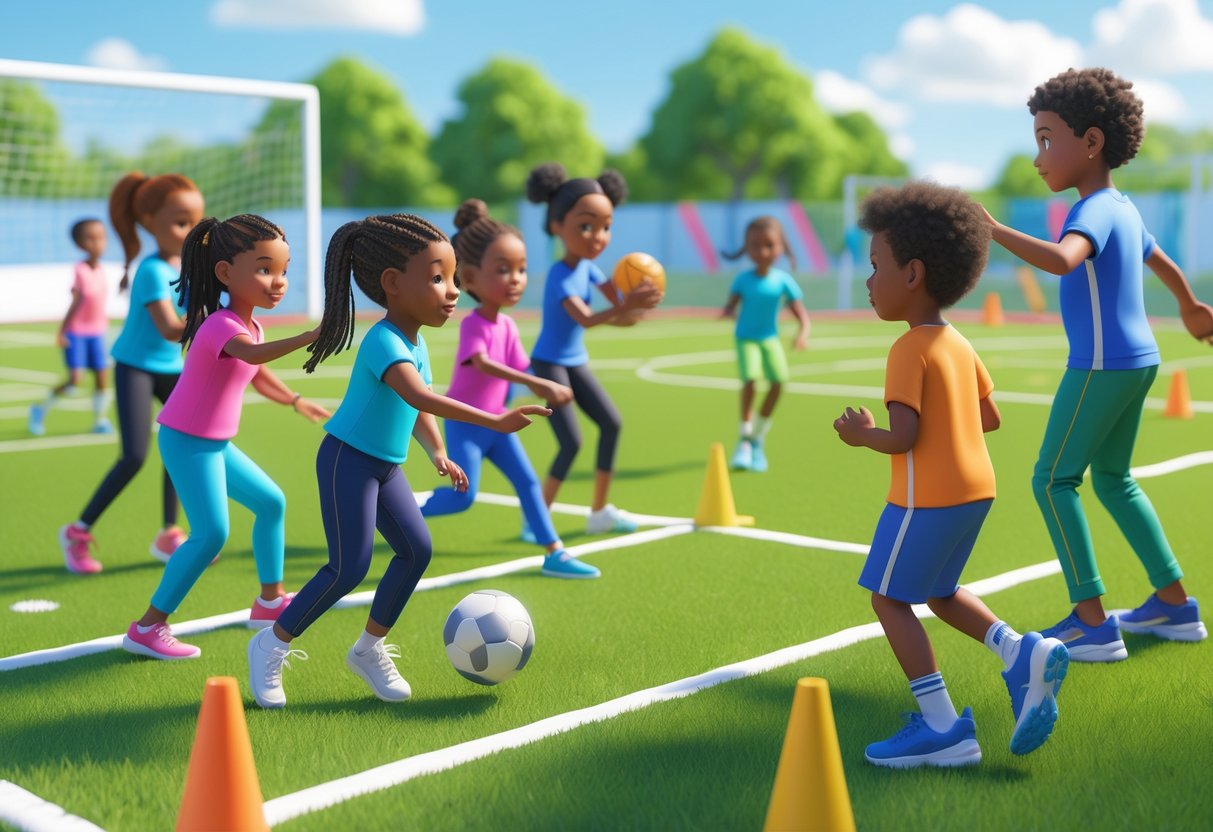
Game Sense flips the old PE script. Instead of endless drills, students play real games and learn tactics while picking up skills as they go.
Strategies for Primary and Secondary Schools
Primary schools really benefit from simple, small games. If you start with 3v3 or 4v4, every kid gets more time with the ball and more chances to make decisions.
Teachers can ask things like, “What space do you see?” or “Where should your teammate move?” These questions get kids thinking, not just reacting.
Secondary schools can handle more tactical stuff. Bring in positions, formations, and trickier decisions using games that still feel like the real sport.
It all comes down to modifying the game. Change the rules, swap out player numbers, or shrink the field to highlight what you want to teach. For example:
- No-dribble basketball makes everyone pass and move
- Touch rugby with bonus points for forward passes gets students thinking tactically
- Football with extra goals helps players see space differently
Each game should focus on one tactical idea but still keep things fun and game-like.
Assessment and Feedback Techniques
Ask questions during games to give feedback without stopping play. Try prompts like, “Show me a better passing option,” or “What if you move here?”
Peer assessment is super useful. Let students watch each other and suggest tactical tweaks. Both the player and the observer learn from it.
Here’s what we look for using game performance indicators:
| Assessment Focus | What We Look For | Quick Feedback |
|---|---|---|
| Decision-making | Choosing right option | “Good choice there!” |
| Tactical awareness | Reading the game | “You spotted that gap perfectly” |
| Skill application | Using skills in context | “Your pass created space” |
Video analysis works for older students. Film a few minutes, watch it together, and chat about what went right or wrong.
The best feedback comes right after a smart decision. Praise the thought process behind the action, not just the result.
Implementing Game Sense in Sport Coaching
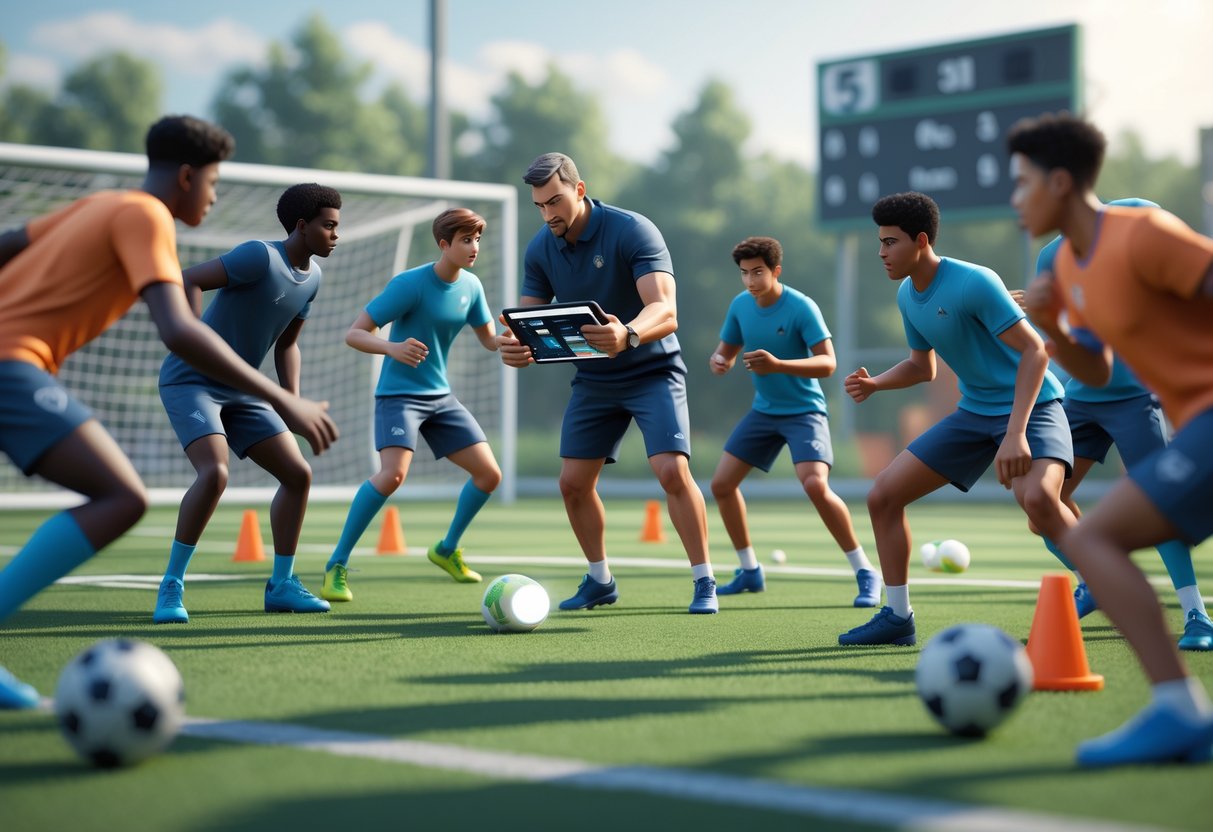
Coaches who use game sense move away from just telling kids what to do. Instead, they set up situations where players have to read the game and solve problems on the fly.
Engaging Thinking Players
Game sense coaching turns athletes into thinkers, not robots. We want players to analyze situations in the moment, not just follow orders.
Ask questions instead of giving answers. Instead of barking instructions, try, “What options do you have here?” or “Why did that work?” Players start thinking for themselves and carry those skills into real matches.
Small-sided, modified games are your main tool. Set up scenarios like 3v2 in football, and attackers have to spot the advantage and decide—shoot or pass?
Try these strategies:
- Use open-ended questions during breaks
- Let players make mistakes and talk about them
- Focus more on decisions than perfect skills
- Encourage players to learn from each other in small groups
Players really grow when coaches stop jumping in to fix every mistake. Step back, observe, and guide with questions.
Creating Inclusive Environments
Inclusive coaching means every player gets a chance, no matter their skill level. You can tweak games to let different strengths shine and open up new ways for everyone to succeed.
Progressive modifications help everyone join in. Maybe you use a smaller field, adjust team sizes, or change how you score. Sometimes a player who struggles with skill work can really shine in a possession game.
Learning together helps the team gel. Pair up experienced and newer players so they can share knowledge through play, not just formal mentoring.
Some inclusive practices:
- Design games where there’s more than one way to succeed
- Rotate who leads activities
- Celebrate smart tactical moves, not just flashy skills
- Use peer feedback to build team smarts
We build psychological safety by caring more about learning than winning. When players know it’s okay to try new things, they take more risks and speak up. That confidence shows up on game day.
Developing Tactical Awareness and Decision-Making Skills
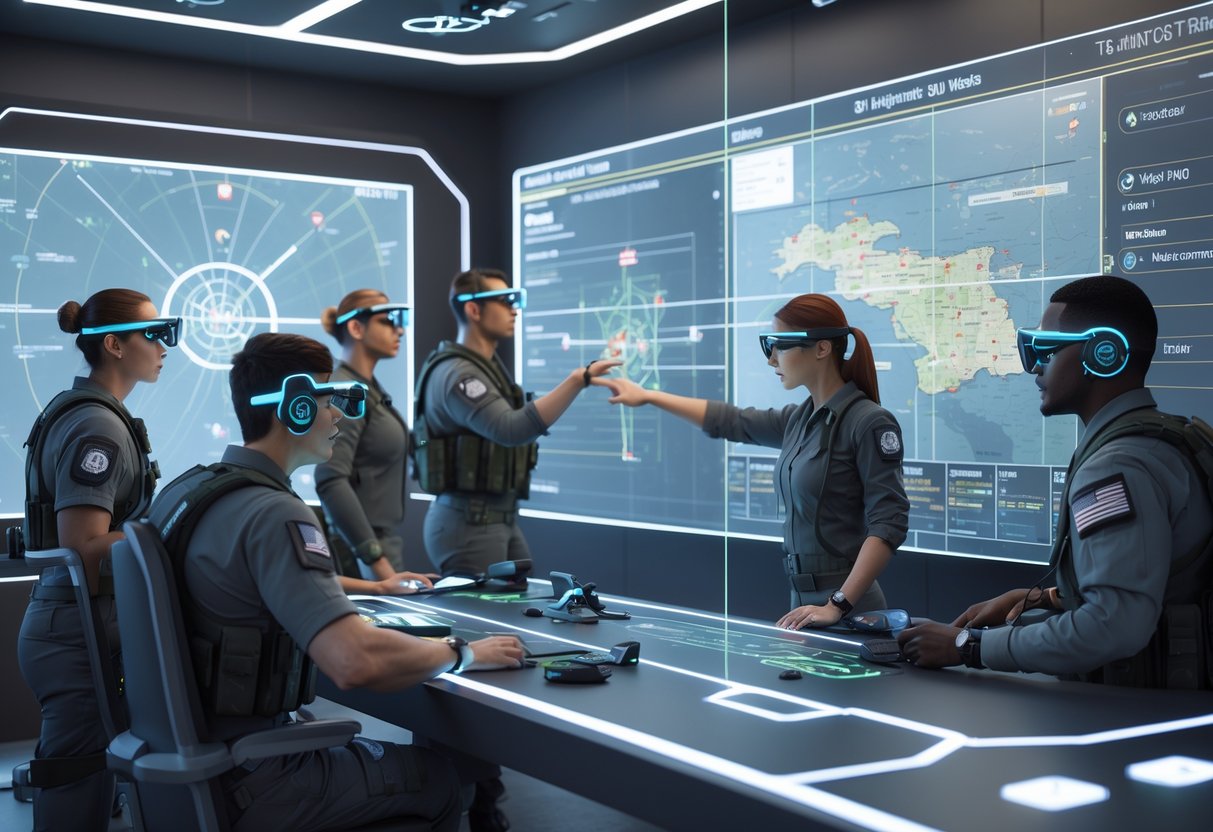
Tactical awareness and decision-making sit right at the heart of game sense. Players who spot patterns and act fast always have the edge.
Building Tactical Knowledge
Building tactical knowledge isn’t just about knowing what to do—it’s about understanding why certain moves work.
In games like football or basketball, we teach players to create space, time their passes, and read the other team. They learn when to push forward, when to hang back, and how to spot what the opponents are up to.
Core tactical ideas:
- Space awareness – seeing where gaps open up
- Timing – knowing when to make a move
- Communication – calling for the ball or signaling a play
- Risk assessment – deciding when to play it safe or take a chance
Use small-sided games to teach these. A 3v2 set-up makes players think about where to stand and who to pass to without overwhelming them.
Players start to recognize patterns when they face the same problems again and again. They react faster and more confidently each time.
Ask questions like, “Where’s the space?” or “Where should your teammate be?” Let players figure things out, don’t just hand them the answers.
Problem Solving in Real Time
Real-time problem solving is what separates good players from great ones. In games, players have to decide—shoot, pass, or dribble—sometimes in a split second.
Players constantly run into tactical problems. They have to pick an action quickly, especially when the pressure’s on.
Key parts of decision making:
- Pattern recognition – seeing familiar situations fast
- Option awareness – noticing all possible moves
- Execution speed – acting before the window closes
- Adaptation – changing plans when things shift
Set up conditioned games to train this. Maybe limit touches or require a certain pass—anything that forces players to think on their feet.
Start with easy scenarios, like 2v1, and slowly ramp up the difficulty.
The best tactical games feel like real matches. Players learn to keep cool under pressure and trust their instincts when it counts.
Activity Cards and Playing for Life Resources
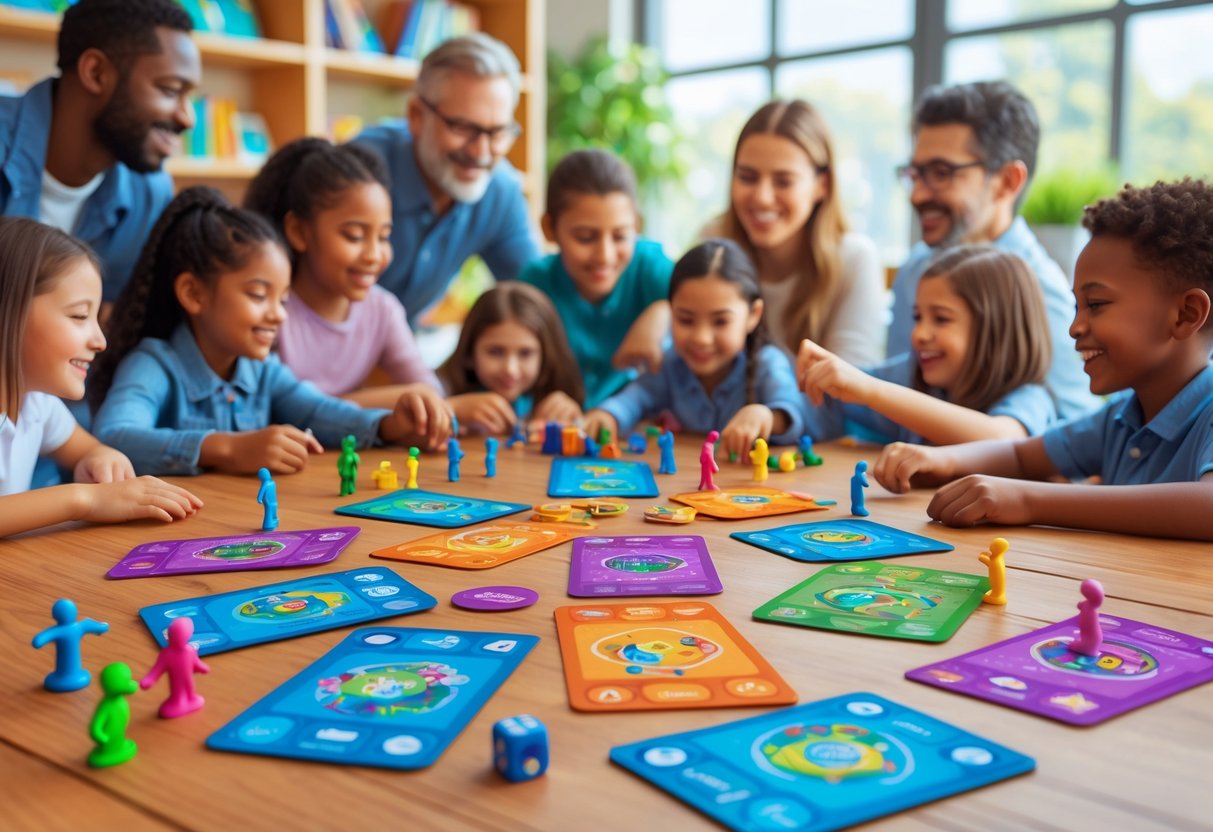
Playing for Life activity cards bring game sense to life for all skill levels. These resources help everyone get involved by tweaking games so everyone has a shot at success.
Designing Inclusive Activities
Playing for Life cards always start with a game, not a drill. Kids get moving right away, learning as they play.
The cards set up safe, inclusive, and challenging spaces for every player. You can make any activity easier or harder, depending on who’s playing.
What makes these activities work:
- Rules that highlight certain parts of the game
- Equipment that matches different skill levels
- Playing areas that fit your group size
- Focus on decision-making, not just technique
Game sense activities create thinkers. Kids learn both tactics and skills as a team, not in isolation.
All that running and moving? It’s hidden in fun challenges. Players get fitter without even noticing.
Using Change It for Modification
The CHANGE IT approach helps you tweak games on the fly. Adjust things to match your group’s needs.
Here’s what you can change:
- Equipment: Bigger balls, shorter bats, softer stuff
- Space: Smaller courts, wider goals, new boundaries
- Rules: Fewer players, new ways to score, time limits
- Skills: Allow catching, reduce contact, simplify moves
Quick tweaks work best. Try “everyone must touch the ball” or “use your weaker hand.” Suddenly, the game feels fresh.
The cards remind teachers to look for players who are bored or dominating. That’s your cue to change things up.
Make tweaks during play. Pause for a second, suggest a change, then get back to the game. Energy stays high, and everyone stays included.
Assessing Game Sense Development Progress

To really see how players are developing game sense, watch them during games and focus on their decisions. We care about how they read the play and react in real time, not just how well they perform isolated skills.
Formative Assessment Methods
Observation during gameplay gives us the best insights into how game sense is coming along. We watch players read the game, make decisions under pressure, and adapt their strategies.
We focus on a few key things:
- Decision speed – How quickly do players spot what’s happening?
- Option selection – Are they picking the right tactics for the moment?
- Communication – How well do they share info with teammates?
- Adaptation – Can they change their plans when things shift?
Questioning techniques let us dig into how players think. Right after big moments, we ask them to walk us through their choices.
Some of the best questions:
- “Why did you go with that move?”
- “What else could you have done?”
- “Would you try something different next time?”
Peer assessment shines in small groups. Players look at each other’s tactical choices and suggest tweaks. This sharpens their analytical skills and gives everyone useful feedback.
Video analysis helps players see their own patterns. We record short clips and break down decision-making moments together.
Evaluating Tactical Improvement
Game understanding assessment looks at three main things: reading the game, making smart decisions, and building strategic thinking.
| Assessment Area | What to Look For | Evidence of Progress |
|---|---|---|
| Game Reading | Spotting patterns, predicting plays | Faster reactions, better positioning |
| Decision Quality | Choosing well, timing moves right | More wins, fewer mistakes |
| Strategic Thinking | Planning ahead, changing tactics | Trying new ideas, solving problems |
We keep simple records of tactical progress over time. No need for complicated scoring—just track improvements as they happen.
Practical assessment activities put players in tactical challenges. Players show what they know by working through real in-game problems.
Tactical awareness grids come in handy for quick checks. Players pick the best options in different scenarios and get instant feedback on their understanding.
Self-reflection journals push players to look at their own growth. They jot down what worked, what flopped, and what they’ll try next time.
Addressing Challenges and Best Practices

Game sense development runs into two big problems: not enough time for real training and a shortage of qualified instructors. Most players can’t squeeze in structured practice, and a lot of coaches aren’t equipped to teach tactical awareness the right way.
Navigating Time Constraints
Time always seems to be the enemy here. Most players get maybe 2-3 hours a day for gaming, and they usually spend it on matches instead of focused practice.
We like the 70-30 rule. Spend 70% of your time playing matches, and use the other 30% for drills or replay reviews. If you’ve got 2 hours, set aside about 35 minutes for targeted practice.
Quick training tips:
- Watch a 5-minute VOD review during a break
- Run positioning drills in custom games
- Use a mobile app for tactical exercises on the go
Teaching games work better in short bursts. Instead of one long 2-hour session, try four 30-minute focused sessions during the week. It helps players remember more and keeps them from burning out.
The best way to build game sense? Mix it into regular play. Before each match, set a goal like “pay attention to map awareness” or “try to predict enemy moves.”
Supporting Teacher and Coach Development
A lot of sports coaching skills carry over to esports, but many instructors don’t know the games inside out. We’ve seen plenty of coaches who get strategy but struggle with the technical side of competitive gaming.
Key coaching skills for game sense:
- Spotting minimap patterns and enemy habits
- Breaking down tough plays into bite-size ideas
- Using replay tools to highlight lessons
- Building custom training scenarios
We recommend a mentorship model where experienced players team up with traditional coaches. This way, you get tactical know-how and teaching chops together.
Coach certification programs are popping up for different games. They usually cost £200-500 and cover both game mechanics and how to teach them. Most focus more on analysis than pure gameplay.
Heads up: Be wary of coaches who promise quick fixes without a real plan. It usually takes 3-6 months of steady effort to see big improvements in game sense.
Frequently Asked Questions
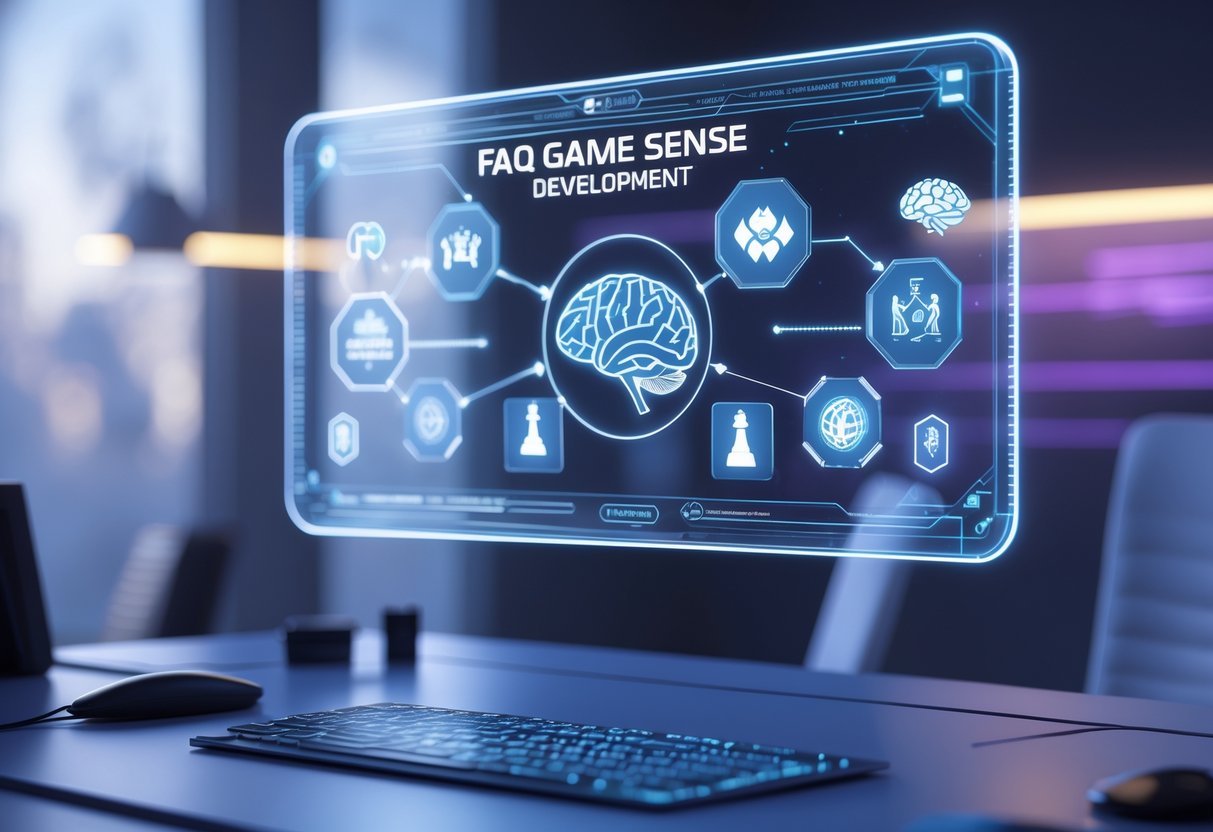
Game sense brings up a lot of questions for players who want to get better. Here are some practical tips and strategies that can actually make a difference in your play.
What are some effective strategies to improve decision-making in competitive gaming?
Start by watching your own gameplay after each session. Look for spots where you made a bad call and see what info you missed.
Practice decision-making drills in training modes. Set up situations where you have to choose fast. It helps you get better at thinking under pressure.
Check out how pros handle similar moments. Watch their reactions and see what you can pick up.
Make mental checklists for common situations. Before you jump into a fight or make a big move, ask yourself things like “Do I have backup?” or “How do I get out if things go wrong?”
Could you suggest methods for enhancing map awareness during gameplay?
Use audio cues to track enemies. Sound can tell you what’s happening where you can’t see.
Get into the habit of checking your minimap every few seconds. Try setting a mental timer to remind yourself.
Learn the usual hiding spots and rotation paths on each map. Knowing these helps you guess where enemies might pop up.
Work on your peripheral vision. Practice spotting movement while you focus on your main goal.
Even in solo practice, call out enemy locations. It builds the habit of tracking everyone on the field.
How can players develop quicker reaction times for better in-game performance?
Try reaction time training tools or websites every day. Spend 10-15 minutes on them before you start gaming.
Warm up with aim trainers that focus on flick shots and tracking. This helps with both speed and accuracy.
Cut down input lag by using wired gear and fast monitors. Sometimes, hardware makes a real difference.
Stay in shape and get enough sleep. Tiredness slows you down way more than most people realize.
Practice the same scenarios until your reactions become automatic. Muscle memory takes over and speeds things up.
What drills or exercises are beneficial for improving tactical play in team-based games?
Run drills with your team that focus on one strategy at a time. Repeat the same tactic until it feels natural.
Use custom modes or workshop maps made for tactical practice. Lots of games offer these tools if you look for them.
Watch pro teams and try to copy their plays with your squad. Start simple, then work up to more complicated strategies.
After matches, hold team talks about what worked and what didn’t. Figure out how to get better together.
Practice clear callouts without the stress of a live match. Good communication is the backbone of team tactics.
In what ways can analysing professional gamers help enhance one’s gameplay?
When you watch pro matches, pay attention to their positioning and timing—not just the flashy plays. See how they move and when they choose to fight.
Study how they use their resources and abilities. Pros almost never waste important cooldowns or gear.
Notice how they adjust their plans mid-game. It’s a big part of staying flexible when things go sideways.
Pick one pro who plays your favorite role or character. Try to get inside their head and see why they make certain choices.
Take notes while you watch, and test those ideas in your own matches. Sometimes, just one new trick can make a big difference.
What role does communication play in the development of a gamer’s strategic skills?
Clear communication lets teams share crucial info on the fly. When everyone’s on the same page, you start to notice your own game sense and strategic awareness getting sharper.
If you make regular callouts, you end up processing game details more naturally. Talking about what’s happening forces you to actually notice the important stuff—sometimes things you’d otherwise miss.
When teams discuss strategy together, you get exposed to all sorts of tactical ideas. Hearing how your teammates think can really open up your own approach.
Good communication builds trust among teammates. With that trust, teams can pull off more complex strategies that need tight coordination.
If you take charge of communication, you have to think about the bigger picture. Calling the shots means juggling a bunch of different factors at once.

